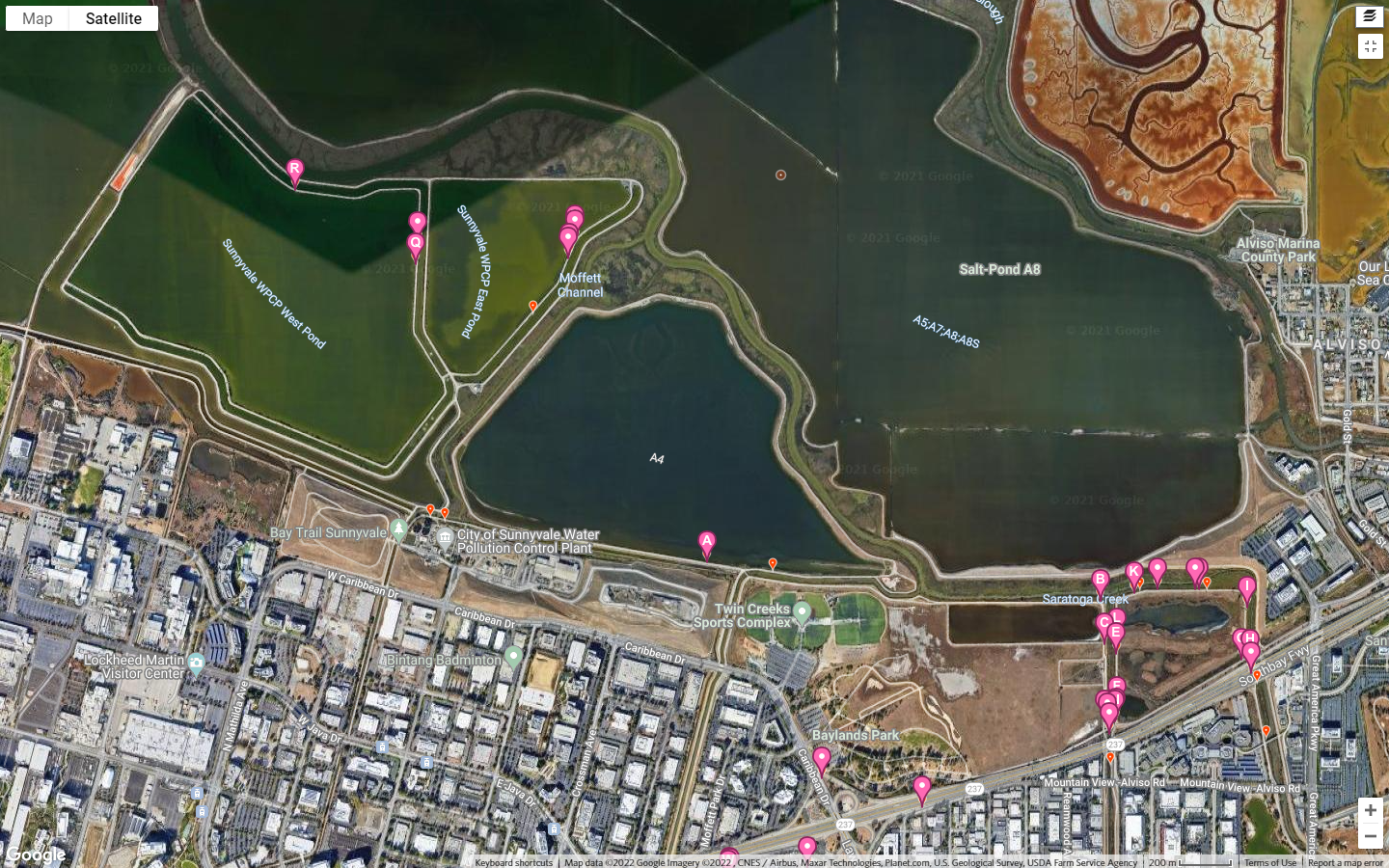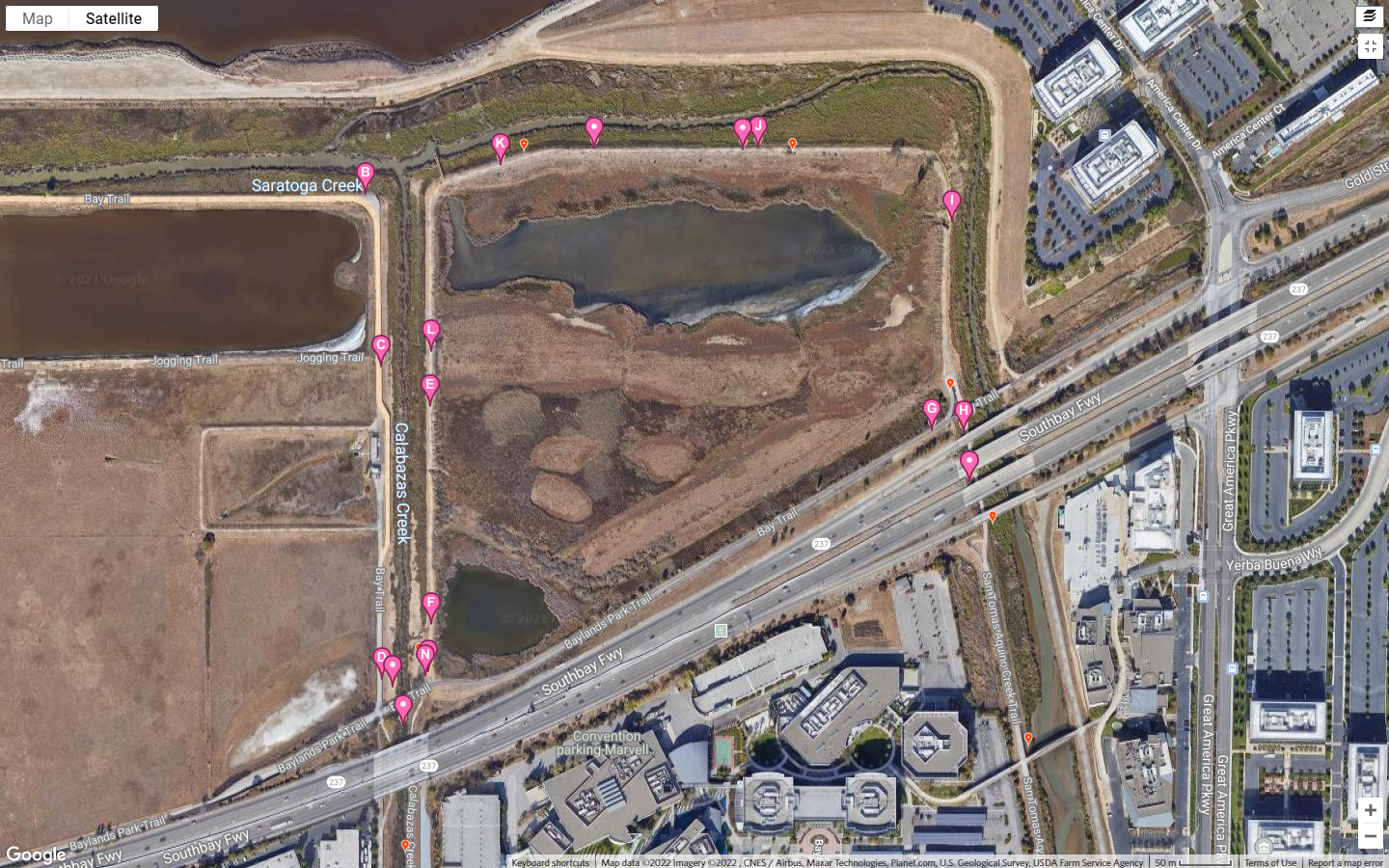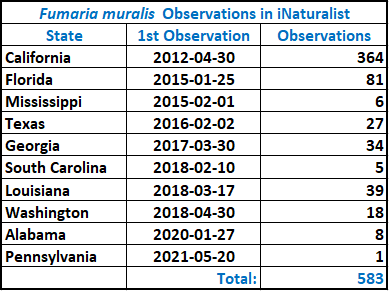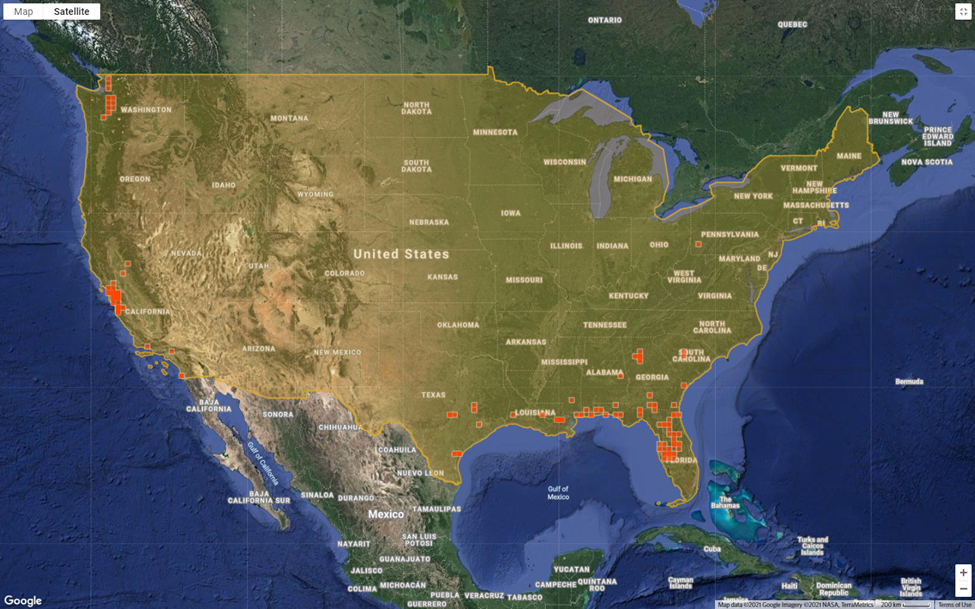How to identify Fumaria muralis (Common Ramping-Fumitory)
Fumaria is usually considered a difficult genus to identify, mainly due to the small size of the features that are useful for identification and the fact that both flowers and fruits are needed for an accurate ID.
Pink-flowered fumitories, in particular, are difficult to identify and many F. muralis plants have been misidentified as F. officinalis or F. capreolata. Furthermore, as of March 2018, the Jepson eFlora and calflora.org databases did not list F. muralis as a species found in California, which has added to the confusion.
Photo tips:
https://www.inaturalist.org/posts/14150-fumitories-of-north-america
This reference describes the photographic evidence and measurements required for accurate identification of fumitories. Close-up pictures of the inflorescence, corollas, sepals, and fruits are required for identification to species.- Note that fumitories cannot be identified to species without flowers and fruit.
- It’s also important to take a photo of the entire plant.
- If there are multiple plants in the picture, it’s helpful to crop your photo to focus on the plant of interest.
How to identify Fumaria muralis:
- Height: Up to 100 cm (39.4 in).
- Stems: The stems are initially erect then become sprawling or climbing. They are weak, many-branched and hairless.
- Leaves: The first leaves grow singly and are 7-15 mm (0.3-0.6 in) long with a stalk 7-15 mm (0.3-0.6 in), and have three hairless leaflets. Later leaves become more compound and lobed. Mature leaves are three times deeply lobed with three or more leaflets, 3-15 mm (0.1-0.6 in) long. Alternate leaves form a rosette. Leaf segments are egg-shaped to triangular and usually three-lobed and hairless. The blade is gray-green to blue-green, flat, and up to 80 mm long x 40 mm wide (3.2 x 1.6 in).
- Inflorescence: There are about 12 flowers per inflorescence.
- Flowers: The corolla is pink (sometimes lightly so) and dark red or purple at the apex; it is 9-12 mm (0.35-0.47 in) in length.
- Sepals: There are two sepals laterally attached to the corolla that are whitish with a green midrib, ovate to broadly oblong, dentate at margin in lower two thirds and measuring 3-5 mm (0.12-0.2 in) long and 1.5-3 mm (0.06-0.12 in) wide.
- Fruit: The one-seeded fruit (achene) is spherical to broadly ovate with an almost smooth to slightly rugose (wrinkled) surface.
- Habitat: Grows in temperate climates in moist, disturbed areas, particularly along streams and waterways. F. muralis prefers to grow in open, bare patches and is considered a weed of pastures, roadsides, gardens, footpaths, coastal shrub lands and disturbed areas.
Similar Species:
- Fumaria capreolata (White Ramping-Fumitory)
- Fumaria officinalis (Common Fumitory)
- Fumaria bastardii (Tall Ramping-Fumitory)
How to differentiate F. muralis from F. officinalis:
- F. officinalis has smaller purplish-pink flowers with 20-40 flowers per inflorescence; FF. muralis has larger pink flowers with about 12-14 flowers per inflorescence.
- The upper petal in F. officinalis is much more spatulate than that of F. muralis and its sepals are much smaller.
- F. officinalis fruits are distinctly broader than long with a truncate or emarginate apex.
- The peduncle in F. officinalis is much shorter than the raceme.
How to differentiate F. muralis from F. capreolata:
- F. capreolata has larger cream-colored flowers with a red-black tip; F. muralis has pink corollas with a dark red or purple tip.
- The inflorescence ofF. capreolata is at least as long as the stalk and the lower flowers are recumbent (turn downward).
- F. capreolata’s mature flowers develop a red stripe during fructification.
- F. capreolata may hybridize with F. muralis.
How to differentiate F. muralis from F. bastardii:
- F. bastardii has pink flowers with purple tips and more than 20 flowers per inflorescence; F. muralis has 12-14 flowers per inflorescence.
- F. bastardii has smaller sepals and the peduncle is shorter than the inflorescence.
- F. bastardiii has strongly rugose (wrinkled) fruits; F. muraliss has smooth or only slightly rugose fruits.
- F. bastardii may hybridize with F. muralis.
How to differentiate F. muralis from F. densiflora
- F. densiflora (dense-flowered fumitory) is very similar to F. muralis but tends to be more purplish-green, the young leaves are smaller with curled lobes, and it has smaller but more numerous flowers.
How to differentiate F. muralis from F. reuteri:
- F. reuteri has larger flowers (11-13 mm long), subentire sepals, peduncle shorter than raceme, longer spur and stigma, central lobe as large as the lateral ones.
References:
- Calflora: https://www.calflora.org/cgi-bin/species_query.cgi?where-calrecnum=13427
iNaturalist:
** https://www.inaturalist.org/journal/blue_celery/14150-fumitories-of-north-america
** https://www.inaturalist.org/taxa/129075-Fumaria-muralis
** https://www.inaturalist.org/projects/fumaria-muralis-in-the-usa
** https://www.inaturalist.org/projects/fumaria-species-in-the-usa/










